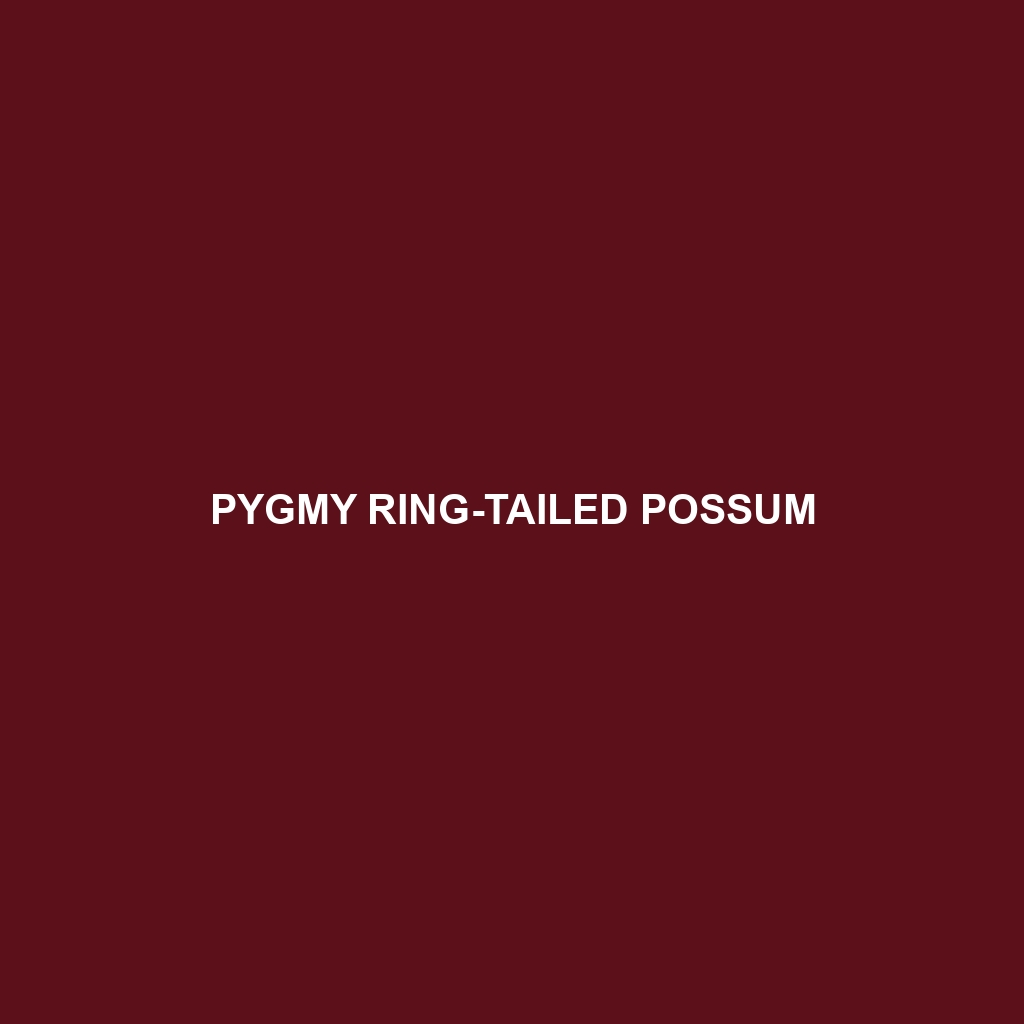Pygmy Ring-tailed Possum: A Detailed Description
The Pygmy Ring-tailed Possum (Pseudochirulus mayeri) is a tiny marsupial native to the rainforests of New Guinea. Known for its remarkable agility and distinctive prehensile tail, this nocturnal creature spends most of its life in the treetops. Despite its small size, the Pygmy Ring-tailed Possum plays a significant role in its ecosystem, particularly in seed dispersal and the maintenance of forest health.
Physical Characteristics
Size: The Pygmy Ring-tailed Possum measures approximately 20-25 cm in total length, with about half of that being its tail. It typically weighs between 45 to 65 grams.
Coloration: The fur is usually a soft, greyish-brown on the back, with a lighter, creamy underside. The tail is often darker and can show a slight banding pattern.
Special Features: This possum boasts a prehensile tail, which is highly flexible and capable of grasping branches, aiding in its arboreal lifestyle. Its large, forward-facing eyes provide excellent night vision, an essential adaptation for its nocturnal activities.
Behaviors
Social Interactions: Pygmy Ring-tailed Possums are generally solitary, but they may form loose associations with others, especially during the breeding season. They communicate through a series of vocalizations and scent markings.
Feeding Habits: They are primarily folivorous, feeding on leaves, flowers, and fruits. Occasionally, they may consume small insects or other invertebrates. Their specialized digestive systems allow them to extract nutrients from tough, fibrous plant material.
Ecological Roles: As seed dispersers, these possums contribute to the propagation of various plant species. Their foraging behavior helps in maintaining the balance of the forest ecosystem.
Habitats
Location: The Pygmy Ring-tailed Possum is found in the montane and lowland rainforests of New Guinea.
Environment: Preferring dense, humid forests, they are well-adapted to a life in the canopy. Their arboreal nature means they rarely come down to the ground.
Adaptations
Prehensile Tail: Their tail functions almost like a fifth limb, enabling them to grasp and navigate through the forest canopy with ease.
Nocturnal Vision: Large eyes with enhanced night vision allow them to be active and forage during the night.
Strong Limbs and Claws: Their powerful limbs and sharp claws facilitate climbing and maintaining a firm grip on branches.
Conservation Status
Threats: The primary threat to the Pygmy Ring-tailed Possum is habitat loss due to deforestation and land conversion for agriculture. Logging and mining activities also pose significant risks.
Conservation Efforts: Currently, there are no specific conservation programs targeted solely at this species. However, their habitat is included in broader conservation initiatives aimed at preserving the rainforests of New Guinea.
Fun Facts
Diverse Diet: While they primarily eat plant matter, Pygmy Ring-tailed Possums have been known to enjoy the occasional insect snack, making them opportunistic feeders.
Agile Athletes: Their ability to leap from branch to branch and hang upside down from their tails makes them some of the most agile of the marsupials.
Rarely Seen: Due to their nocturnal nature and preference for high canopies, they are rarely seen by humans, making them one of the more elusive creatures of the New Guinea rainforests.
The Pygmy Ring-tailed Possum, with its unique adaptations and vital ecological role, is a fascinating example of nature’s diversity. Protecting these charming marsupials ensures the continued health and biodiversity of their rainforest habitat.
